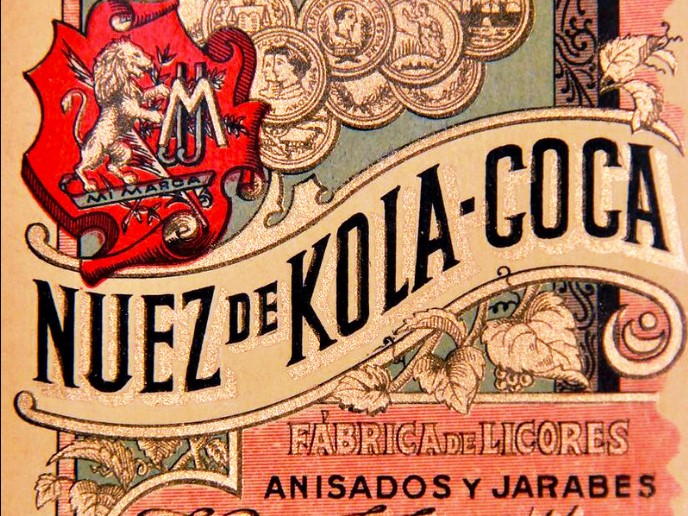Could the formula for the world’s most famous soft drink have originated in a small Spanish town of fewer than 5,000 people? The question may sound provocative, yet the history of Ayelo de Malferit suggests a fascinating connection that challenges the official origin story of Coca-Cola. Was it a copy, a chance inspiration, or simply a historical coincidence?
The Birth of Kola-Coca in Ayelo de Malferit
In the heart of the Valle de Albaida, just 75 kilometers from Valencia, lies Ayelo de Malferit. Known as the birthplace of the singer Nino Bravo, this quiet village holds an even more incredible story. In 1880, three visionary entrepreneurs—Bautista Aparici, Ricardo Sanz, and Enrique Ortiz—founded the company “Aparici, Sanz y Ortiz.” Their goal was to create something unique. The result was Kola-Coca, a syrup made from the caffeine-rich African kola nut and Peruvian coca leaves, mixed with fresh water. It was marketed as a restorative tonic to calm nerves, combat fatigue, and improve digestion.
An Unexpected Success and the Fateful Journey to America
Success was not long in coming. Kola-Coca quickly gained popularity in Spain and beyond. However, the pivotal moment occurred in 1885, when the tireless sales manager Bautista Aparici presented his creation at a competition in Philadelphia, USA. There, Kola-Coca not only won a gold medal, but Aparici also left samples of his syrup with American trade representatives—a gesture with unforeseen consequences.
Just one year later, in 1886, pharmacist John Stith Pemberton in Atlanta, Georgia, developed a drink he touted as a miracle cure: Coca-Cola. The main ingredients? Coca leaves and kola nuts, just like the Spanish Kola-Coca. The only significant difference was the use of carbonated water, which gave the drink its familiar fizz.
The American Legend: How Coca-Cola Truly Came to Be
The official legend of Coca-Cola often omits the context. Pemberton, a war-wounded and morphine-addicted veteran, was desperately searching for a remedy for his pain. Inspired by popular coca wines like “Vin Mariani,” he first created an alcoholic “French Wine Coca.” When prohibition laws took effect in Atlanta in 1886, he had to adapt his formula. He removed the alcohol and added sugar syrup and kola nuts. Supposedly, an accident in which the syrup was mixed with soda water led to the birth of Coca-Cola. Amid the American temperance movement, which rejected alcohol, Coca-Cola became the perfect alternative, marketed as “the temperance drink.”
The Golden Age and the Abrupt Fall of Kola-Coca
While Coca-Cola was slowly gaining traction in the U.S., Kola-Coca from Ayelo was experiencing its golden age. Between 1881 and 1892, the company collected numerous awards at international fairs in Milan, Rome, Paris, and Chicago, and was even appointed an official supplier to the Spanish Royal House in 1892. However, the Spanish Civil War (1936-1939) and the subsequent Franco dictatorship interrupted this path to success. Raw material shortages and economic hardship crippled production, causing Kola-Coca to fade into local obscurity.
The 1953 Deal: Coca-Cola Buys Out Its Spanish Rival
In 1953, as the Coca-Cola Company expanded into Spain, it encountered a legal obstacle: the name “Kola-Coca” was already registered by the factory in Ayelo. To avoid a legal battle, representatives from the U.S. corporation traveled to Ayelo and bought the naming rights for a sum rumored to be a mere 30,000 pesetas (about €180 today). In return, the distillery was allowed to continue producing an alcoholic version, the “Kola-Coca Walnut Liqueur,” which is still handcrafted to this day.
A Legacy in the Shadow of the Giant
Although there is no definitive proof of formula theft, the parallels are striking: identical main ingredients, the close timing, and the crucial presentation in Philadelphia. The story is now even briefly mentioned in the English Wikipedia entry for Coca-Cola. While Coca-Cola grew into a global empire, the legacy of Ayelo de Malferit remained a local anecdote. But this story reminds us that great ideas often originate in the most unexpected places. So the next time you open a Coca-Cola, remember the three Valencians whose vision may have laid the foundation for what you hold in your hand.




